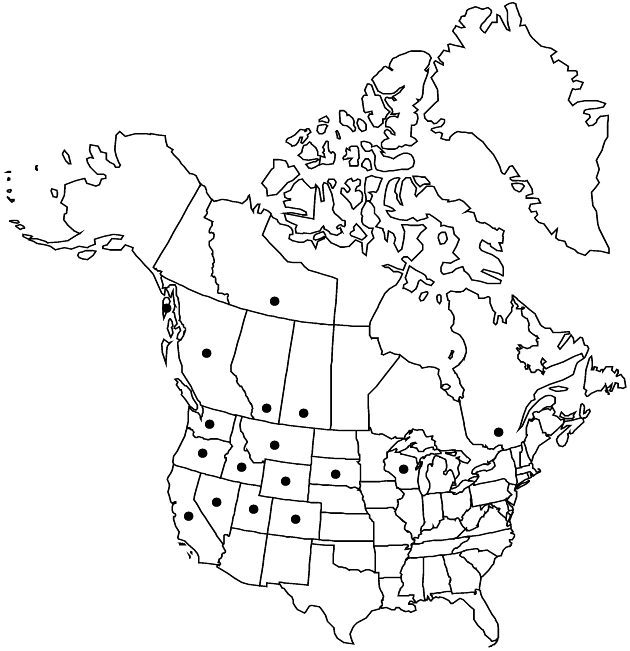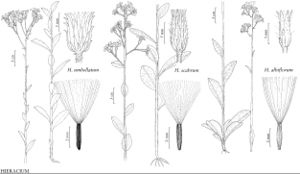Difference between revisions of "Hieracium albiflorum"
Fl. Bor.-Amer. 1: 298. 1833.
FNA>Volume Importer |
imported>Volume Importer |
||
| (3 intermediate revisions by 2 users not shown) | |||
| Line 6: | Line 6: | ||
|place=1: 298. 1833 | |place=1: 298. 1833 | ||
|year=1833 | |year=1833 | ||
| + | }} | ||
| + | |special_status={{Treatment/ID/Special_status | ||
| + | |code=F | ||
| + | |label=Illustrated | ||
}} | }} | ||
|basionyms= | |basionyms= | ||
| Line 11: | Line 15: | ||
|name=Chlorocrepis albiflora | |name=Chlorocrepis albiflora | ||
|authority=(Hooker) W. A. Weber | |authority=(Hooker) W. A. Weber | ||
| + | |rank=species | ||
}} | }} | ||
|hierarchy=Asteraceae;Asteraceae tribe Cichorieae;Hieracium;Hieracium albiflorum | |hierarchy=Asteraceae;Asteraceae tribe Cichorieae;Hieracium;Hieracium albiflorum | ||
| Line 34: | Line 39: | ||
-->{{#Taxon: | -->{{#Taxon: | ||
name=Hieracium albiflorum | name=Hieracium albiflorum | ||
| − | |||
|authority=Hooker | |authority=Hooker | ||
|rank=species | |rank=species | ||
| Line 48: | Line 52: | ||
|publication title=Fl. Bor.-Amer. | |publication title=Fl. Bor.-Amer. | ||
|publication year=1833 | |publication year=1833 | ||
| − | |special status= | + | |special status=Illustrated |
| − | |source xml=https:// | + | |source xml=https://bitbucket.org/aafc-mbb/fna-data-curation/src/2e0870ddd59836b60bcf96646a41e87ea5a5943a/coarse_grained_fna_xml/V19-20-21/V19_417.xml |
|tribe=Asteraceae tribe Cichorieae | |tribe=Asteraceae tribe Cichorieae | ||
|genus=Hieracium | |genus=Hieracium | ||
Latest revision as of 19:51, 5 November 2020
Plants 15–40(–90) cm. Stems proximally usually piloso-hirsute (hairs 1–6+ mm), rarely glabrous, distally glabrous. Leaves: basal (0–)3–8+, cauline 1–5(–12+); blades oblanceolate, 40–100(–300) × 12–30(–60+) mm, lengths 3–5+ times widths, bases cuneate, margins usually entire, sometimes sinuately toothed, apices obtuse to acute, faces piloso-hirsute (hairs 1–6 mm), rarely glabrous. Heads (3–)12–50+ in corymbiform to paniculiform arrays. Peduncles usually glabrous, sometimes stipitate-glandular. Calyculi: bractlets 5–12+. Involucres ± campanulate, (7–)8–10(–11) mm. Phyllaries 8–13+, apices acuminate, abaxial faces piloso-hirsute (hairs 1–2+ mm), stellate-pubescent, and stipitate-glandular. Florets (6–)12–25+; corollas yellow, 9–10 mm. Cypselae columnar, 2.5–4 mm; pappi of 30–40+, stramineous bristles in ± 2 series, (4–)5–7 mm.
Phenology: Flowering (May–)Jun–Sep.
Habitat: Chaparral, conifer forests, meadows, stream beds, serpentines, volcanics, around mineral springs
Elevation: 10–2900 m
Distribution

Alta., B.C., N.W.T., Que., Sask., Alaska, Calif., Colo., Idaho, Mont., Nev., Oreg., S.Dak., Utah, Wash., Wis., Wyo., Mexico (Chihuahua, Sonora).
Discussion
Selected References
None.
